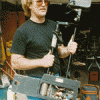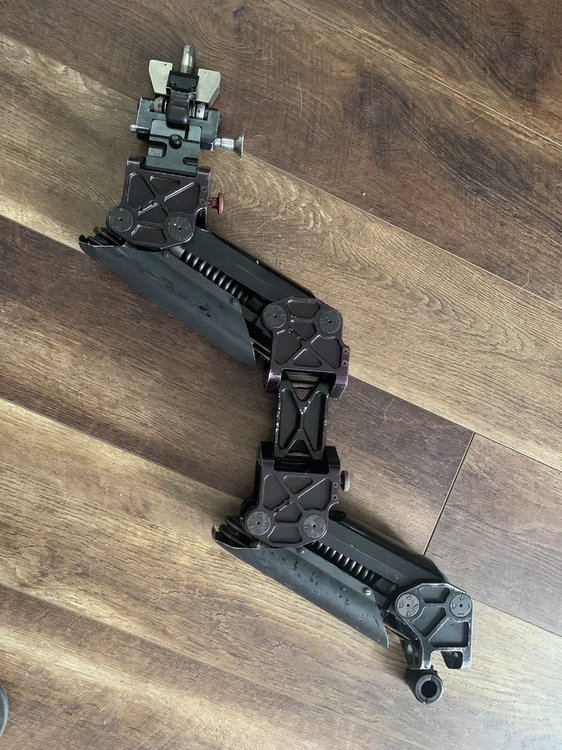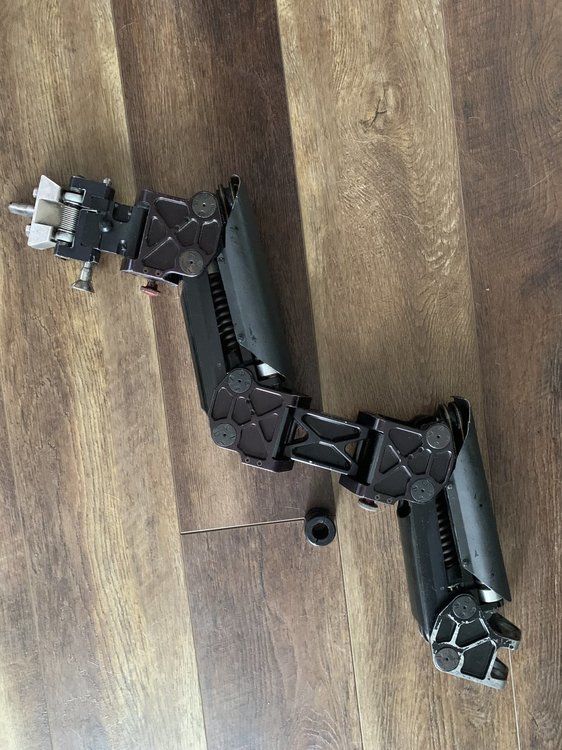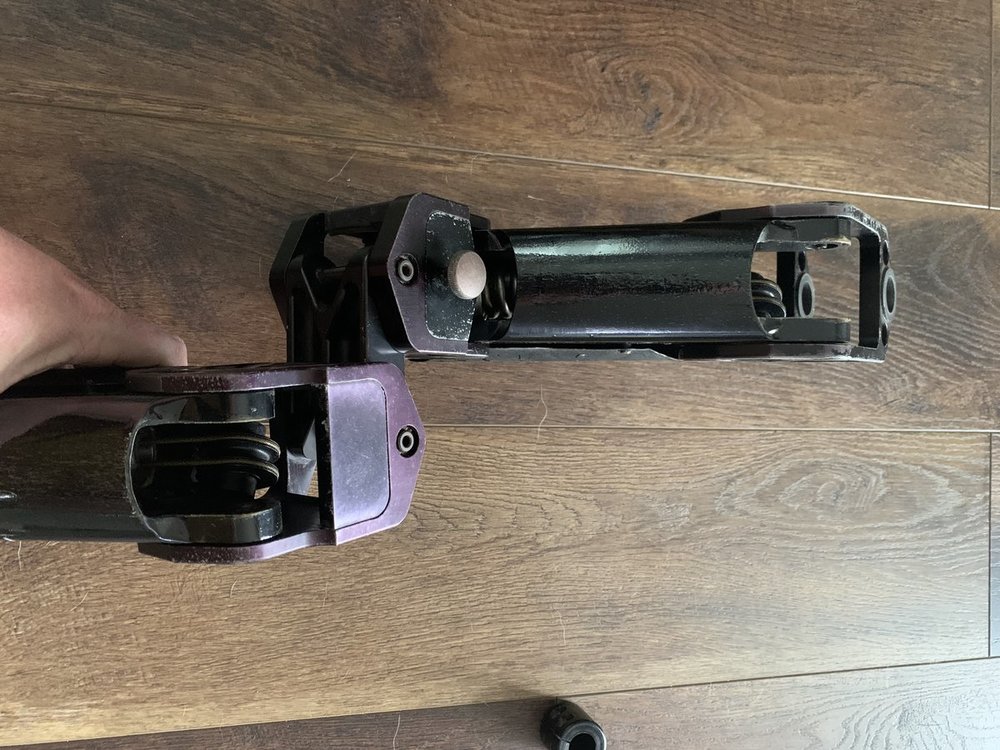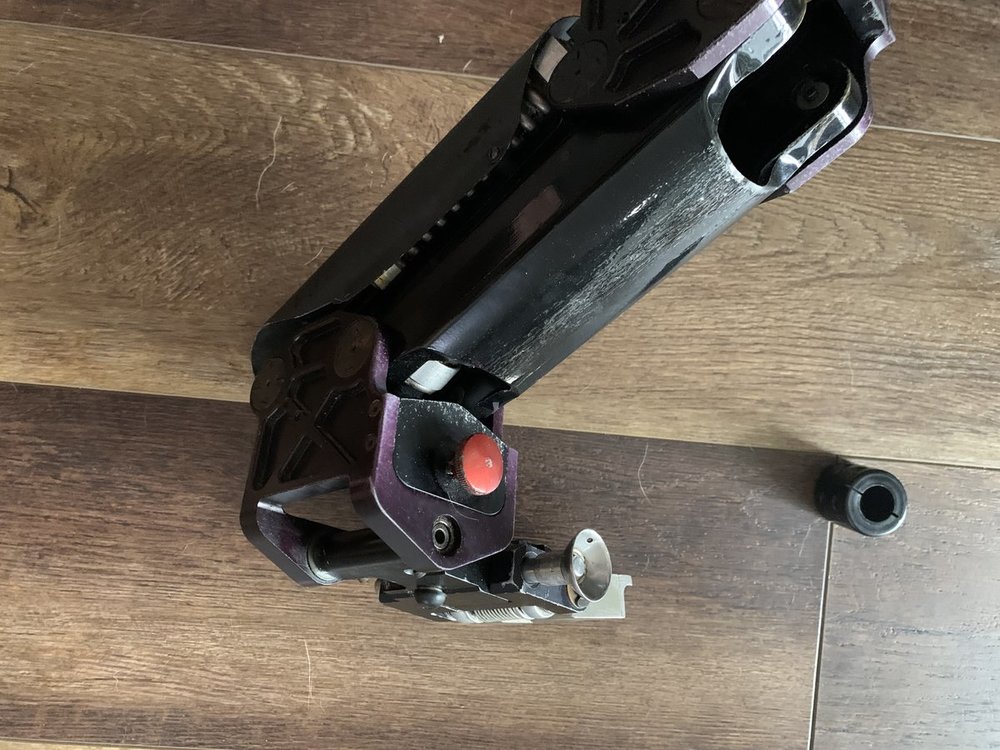Leaderboard
Popular Content
Showing content with the highest reputation on 06/26/2020 in all areas
-
Robert Luna upgraded all parts in the arm 2 years ago. Made the practically brand new. New clear protectors on the top of the arm. It comes with a new arm bag and 1 tiffen arm post (Might have an extra tiffen to pro arm post) Great arm. Works just like new. $4,800 obo. Please feel free to call or message me 504-220-6403 or steve@steveacheson.com1 point
-
Hey Ozzie. Happy to see you are doing well! I wouldn’t mind seeing it plugged into the Stanton. Don’t have one though. But I will in the next day or two. I will have Rob bring his by the shop. He originally asked for it. It’s Mogami Cable, so it’s not stiff. It’s about 6” long and I can plug one end into the other.1 point
-
Hi Guys thanks for the replies. Addressing the comments. Stephen, glad your bi-focals work for you, as I mentioned above, I found these good for every day use around the house etc. I did have some issues with stairs, going down in particular, we tend to use our peripheral vision I guess to gauge the stairs and the junction of the two powers of the lens seems to be around the 45 degree down mark, that's about the angle stairs are set at. So if you simply look down as you approach the stair you look through the magnified section of the bi-focal and the image is totally blurred, very hard to be confident with that first step. once on the stairs then your muscle memory takes over for the most part. But for the judgement of that first stair you have to consciously look down with your head to see the stair clearly. Often our use of peripheral vision is seeing the stairs and our brain makes its judgement from the peripheral image but if your peripheral vision is seeing through the higher magnification (reading section) of the lens, which results in an blurred image to the brain, our brain can only have a poor judgement of where that stair is etc.. Hi Alex, as john has added below your post, these are called a progressive lens. John, thanks for your comment. I have tried these progressive lens glasses too, I chose the cheaper option which has a narrower field of vision. I can't remember exactly how it worked, a bit like an hour glass shape in the way the different powers of magnification are transitioned. The more expensive lens gives you a wider transition. So again for me I found that looking around with just my eyes without moving my head gave the world a bit of a wobbly sensation. So up to now I have found that single vision glasses have been a good option. I don't have any real problems of astigmatism or more complicated eye dysfunctions so although not perfect I can use off the shelf reading glasses, and have several powers to suit particular situations. My distance vision requires about 0.7 diopter and my reading is about 2.5 , so mostly I tend to use a 1.5 magnification reader for the Steadicam work. These give me pretty good vision/focus for my surroundings and pretty good focus for my monitor when in high mode, low mode not very good focus. Another point regarding the bi- focal and progressive lens glasses, for regular camera operating, these days we're all blessed with field monitors on the camera, a great tool for operating in those physically difficult setups. But with the bi-focal and progressive lens with the reading (close-up ) section at the bottom of the lens if the monitor (generally mounted on top of the camera) is above your head you have to tilt your head back a lot to view it through the reading area of the lens. Naturally this can be quite uncomfortable even after a short time. Anyway, I've recently have been to the optometrist for a checkup and have explored again contact lens. Since last trying these some dozen years ago, mentioned in my first post, technology has advanced and you can now get them as a "Progressive" lens and you can now leave them in your eyes for a month at a time, you don't have to take them out each day. So I have now got what they call a "tester" pair. These have been set up as, both eyes have a distance prescription and one eye has a close up reading prescription and the other eye has a mid distance prescription. The Right eye is close up reading/ Low mode operating, so 2- 3 feet focus plus distance and the Left eye is mid distance, 3-5 feet focus plus distance. These are not perfect as yet and may need a bit of refining, additionally they say it can take a few days to a couple of weeks for your brain to retrain itself to process the image and to workout which section of the retina is in focus. That being said I'm blown away with the result. The liberation of not having to wear glasses is so good, as said not quite perfect just yet. Not having the frame of the glasses in your peripheral vision is great, not having to look through a specific section of the glasses is just fantastic. Life just seems to be in focus, the distance vision isn't quite right with these at this point but the close up world is really good could be a little better for reading a book with small print. I guess that I could get some additional glasses to wear if I really needed for reading small print. Even if this is as good as it gets I will stick with them as it's pros far out weigh the cons for me at this time. One big pros that I was thankful for this weekend, digging a hole under a house, very hot and humid day, a lot of sweating, normally I'd have drops of sweat on my glasses and having to put up with it or cleaning them every couple of minutes, wow just fantastic, no cleaning required. Digging under a house and sweating as much as I was, I would have had to take the glasses off and dig blurred, it was like being in a rain storm. I can see this as a huge bonus when operating Steadicam on those hot days, nothing worse then drops of sweat on your glasses in the middle of a shot. My eyes in general aren't so bad that I'd wear glasses all the time particularly during the day, night-time is quite different. I've only done a half a dozen Steadicam shoots in full rain or rain effects, admittedly your cap can keep your glasses generally clear but not always. These contact lenses will be a huge benefit in those circumstances. I haven't used the rig since getting these lenses but the confidence I now have in seeing the world more naturally like when I was a young man gives me great hope. To be honest I had been thinking that I would soon have to give up operating as I simply didn't have the confidence in my balance due to not seeing the world in proper focus. For me these are a game changer. Cons, the $400 prescription sunglasses I have are now useless unless I take out the contacts and I'll have to get used to putting the contacts in and out at some point. Not sure of the cost at this time, I don't think they are super expensive, I believe the ones that can stay in for a month are a bit more than the daily ones and it may work out a bit more then regular glasses. I hope that my health fund will cover most of the expense but I think they will be well worth the expense. Another Pros, they're hard to break, not easily lost ( I presume ), I'm not sure about swimming, maybe you have to keep your eyes closed a little bit so they don't wash out, but I don't swim a lot these days. I can always wear goggles. Plus I don't have to have several pairs of glasses around my neck. I've only had these for a few days now so I guess time will tell. I did ask the dumb question at the time of getting them, "how do you know if they're the right way up ?" . The answer is that there isn't a right way up, the prescription is set up in concentric circles, like a bulls eye apparently, the distance in my case is in the center and the more powerful magnification for closer distances is on the outside. I believe that they can create these lenses with more than 2 bands so potentially you can have a few levels of magnification in each lens, so that may be the next tester. Again it will take some time for my brain to reorder itself to process the information. I'm not sure if this technique can be created in laser surgery but I would doubt it. As for people who have cataracts and get their natural lens replaced with a artificial lens I'm not sure if they can do the multi focal version for them, I don't see why not. My mother had her lenses replace a dozen years ago and she has one lens for reading and the other eye for distance single vision for each eye. She does very well for a 91 year old, reads the paper without glasses and drives the car. Yes we would all prefer she didn't, but like Charlton Heston, we couldn't pry those keys out of her dead cold hand. So perhaps they have the multi-focal option for that surgery now. An interesting fact that the optometrist told me about why we need to get glasses after the age of 40. Apparently the lens in our eyes is one of the few things in our body that continue to grow as we age. In turn as the lens grows it become much more difficult for the mussels that control the lens to adjust its shape to focus the image in our eyes. Anyway, I'll post another report in a few weeks time or reply to any questions. Many thanks for your interest. Seeing the world more clearly. Geoff Owen1 point

